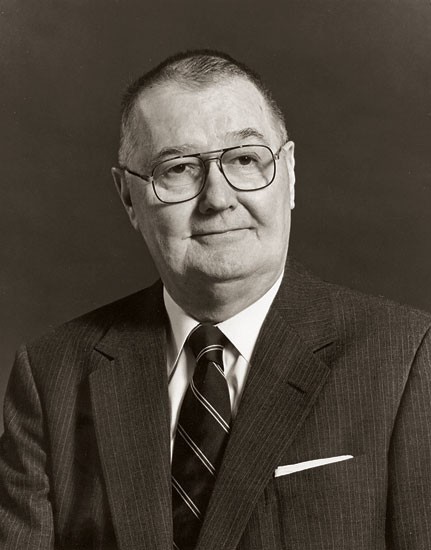
Frank Horton, Winston-Salem, North Carolina, ca. 1985. (Unless otherwise noted, all photographs are courtesy, Old Salem Museums & Gardens, and all objects illustrated are from the collections of the Museum of Early Southern Decorative Arts and Old Salem Museums & Gardens.)
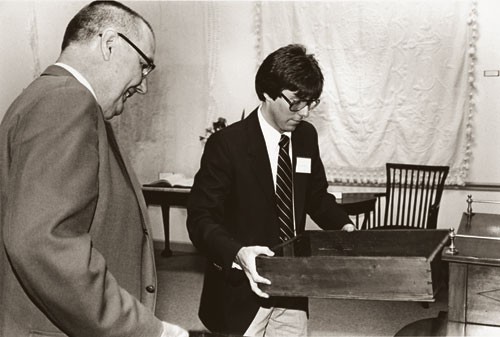
Frank Horton with Luke Beckerdite, Winston-Salem, North Carolina, ca. 1979. The author had the privilege and pleasure of working with Frank at MESDA from 1979 to 1986.
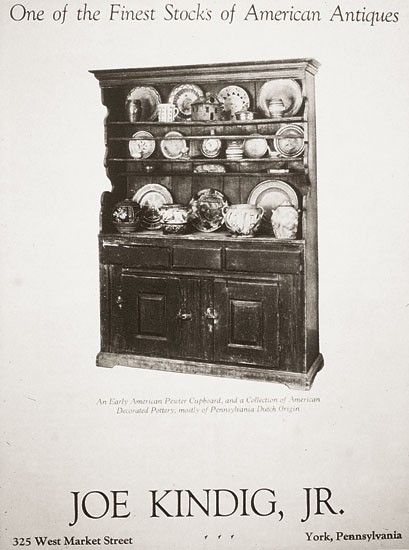
Advertisement by Joe Kindig in Antiques 27, no. 4 (April 1935): 121. The black sugar jar on the bottom shelf of the cupboard is now in the collection of Old Salem Museums & Gardens
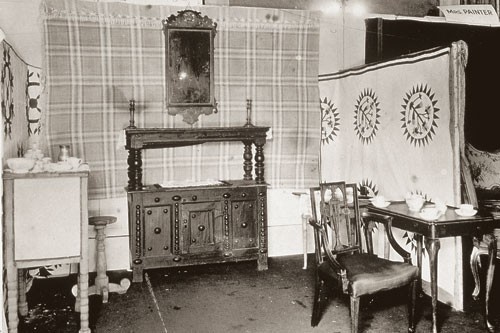
Mr. and Mrs. J. L. Brockwell’s booth at the Commodore Hotel, in New York City, 1929.
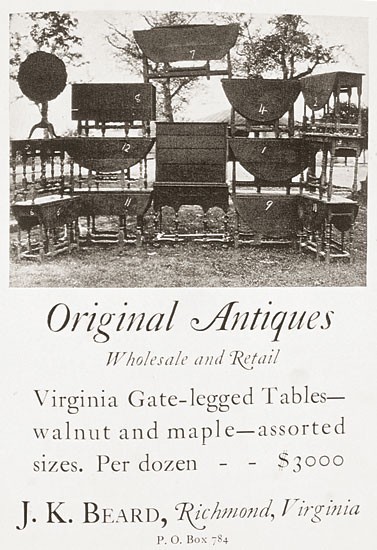
Advertisement by J. K. Beard in Antiques 4, no. 4 (October 1923): 193.
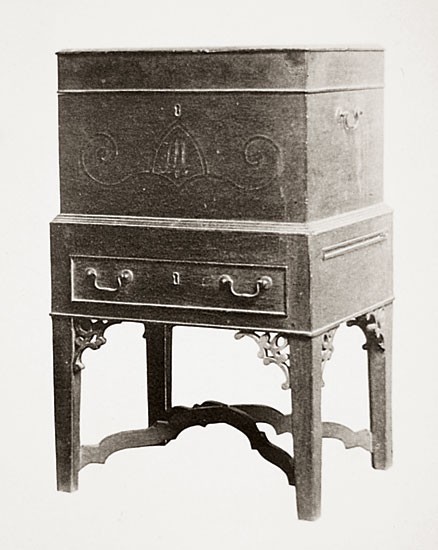
Cellaret illustrated on pl. 3, p. 72 in Paul H. Burroughs, Southern Antiques (Richmond, Va.: Garrett & Massie, 1931). This cellaret is now in the MESDA collection. It is attributed to an anonymous artisan who worked in the Roanoke River basin area of North Carolina and who marked several pieces with his initials “WH.”
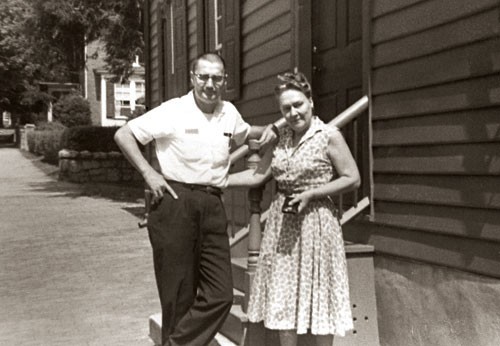
Frank Horton and his mother, Theo Taliaferro, in front of their house in Old Salem, Winston-Salem, North Carolina, ca. 1965.
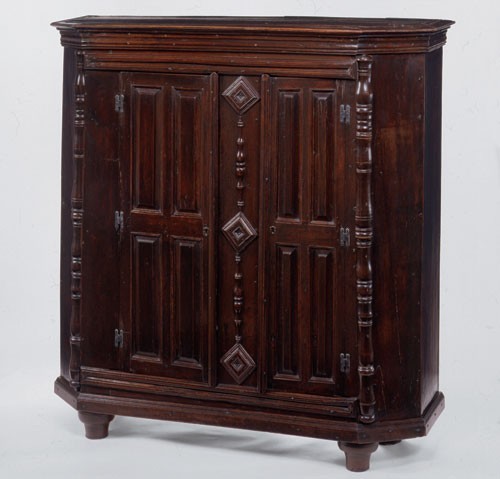
Clothes cupboard, southeastern Virginia, 1650–1690. Walnut with yellow pine. H. 61 1/2", W. 61 3/4", D. 20".
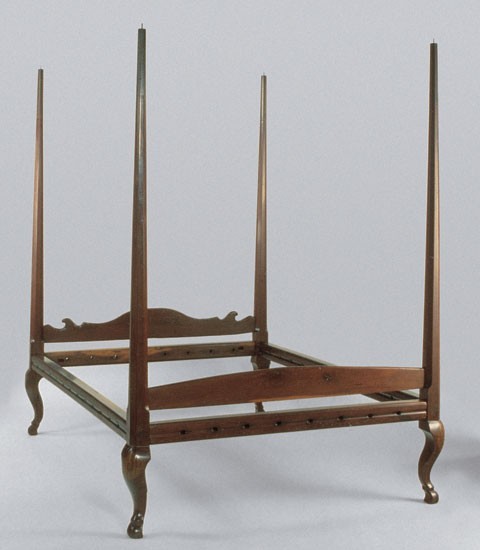
Bedstead, eastern North Carolina, 1720–1740. Walnut. H. 77", W.55 7/8", D. 76 1/2".
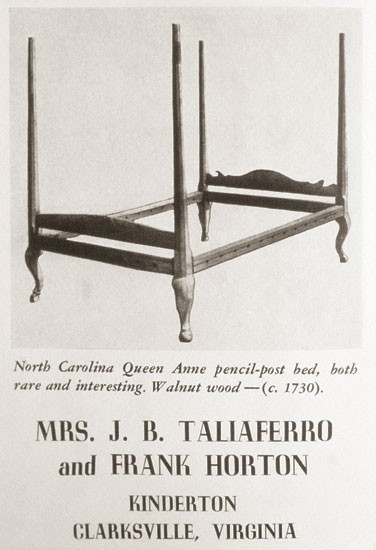
Advertisement by Mrs. J. B. Taliaferro and Frank Horton, Antiques 41, no. 3 (March 1942): 166.
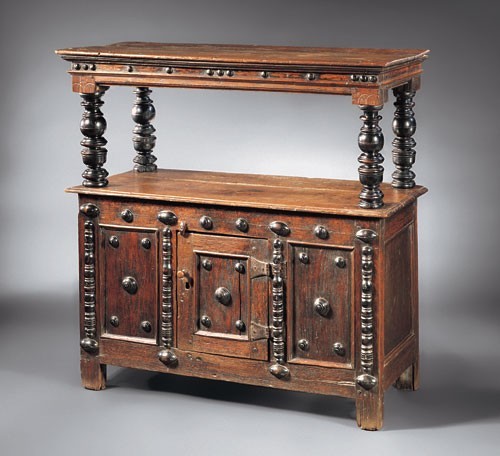
Court cupboard, southeastern Virginia, 1620–1680. Walnut with yellow pine. H. 49 7/8", W. 50", D. 18 7/8".
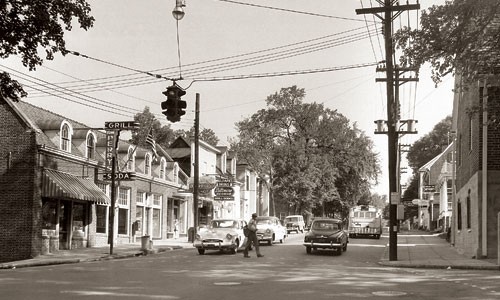
Early view of Main Street in Old Salem.
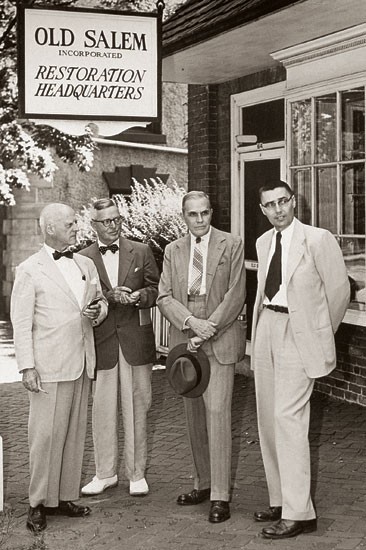
Frank Horton (far right) conferring with architects involved in restoration projects at Old Salem.
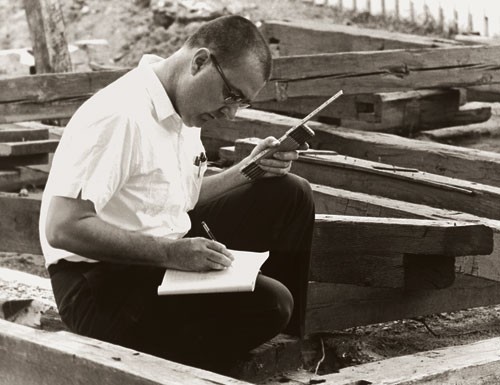
Frank Horton cataloging timbers from the Levering House, Salem, North Carolina, ca. 1971.
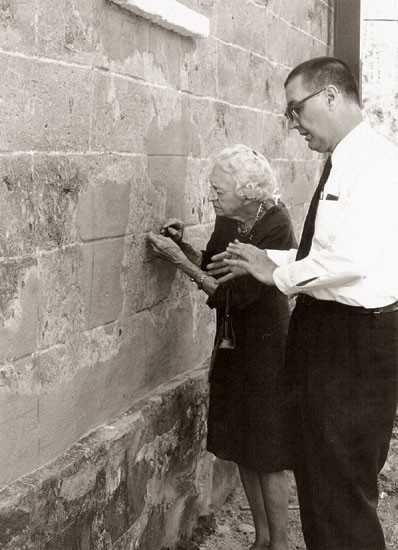
Frank Horton and Ada Allen examining the paint and masonry of the Gemeinhaus, Bethabara, North Carolina, ca. 1970.
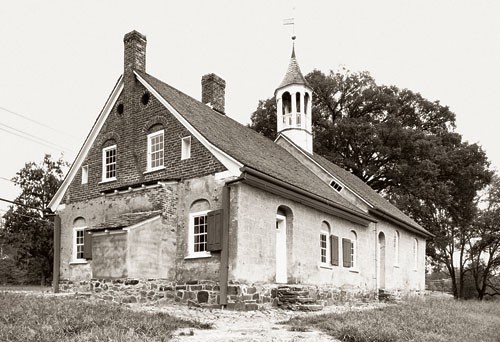
Gemeinhaus, Bethabara, North Carolina, 1788.
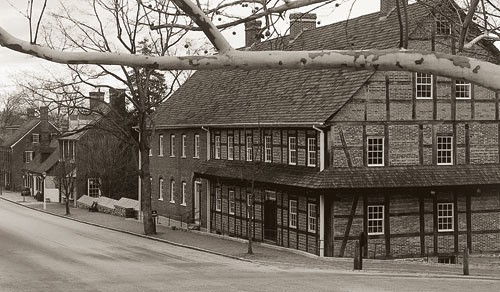
Single Brothers House, Salem, North Carolina, 1769. (Photo, Virginia Weiler.) The brick addition to the original half-timber structure was completed in 1786.
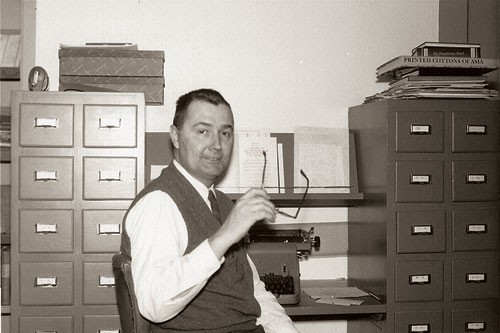
Frank working on the Moravian research files, 1966.
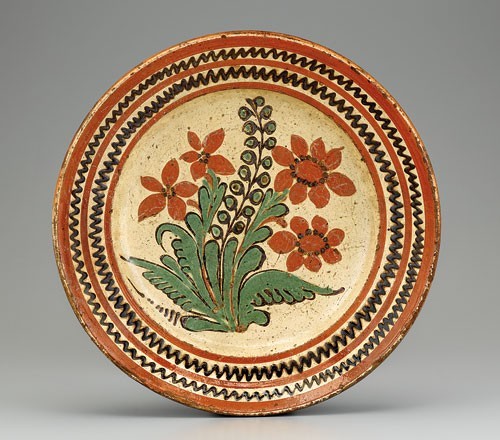
Dish attributed to Gottfried Aust, Salem, North Carolina, 1770–1780. Lead-glazed earthenware. Diam. 13 1/2". (Photo, Gavin Ashworth.) This dish is one of the most naturalistic and technically accomplished examples of American slipware. Dishes of this type were intended as decoration and often displayed on furniture and on mantels or architectural moldings.
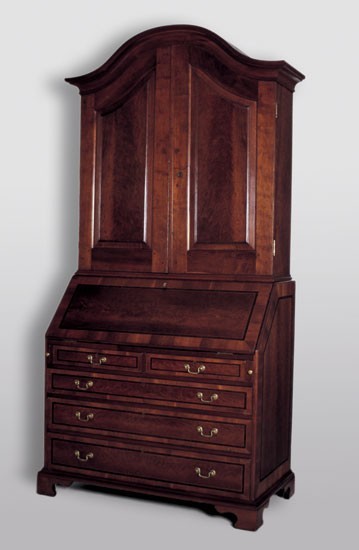
Desk-and-bookcase attributed to Johannes Krause, ca. 1795. Cherry and cherry veneer with yellow pine and tulip poplar. H. 97 1/4", W. 46 1/4", D. 25 3/8".
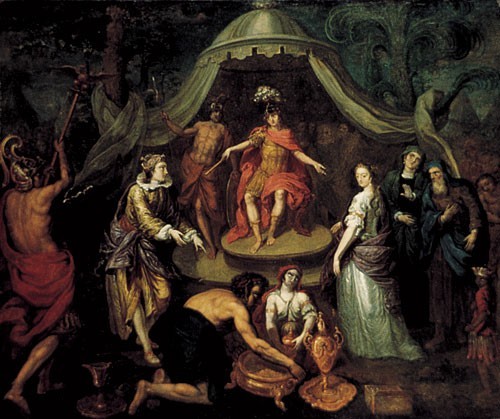
John Valentine Haidt, The Queen of Sheba Visits King Solomon, 1765. Oil on canvas. 25" x 29".
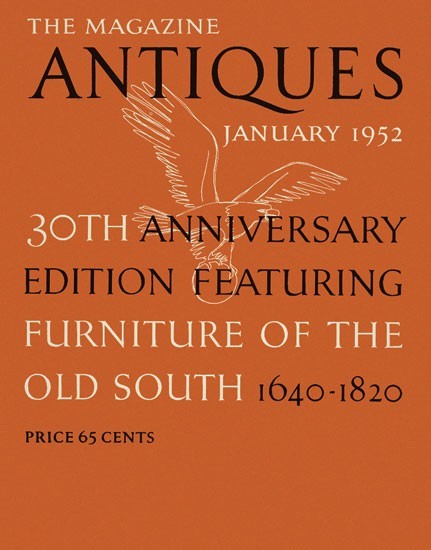
Cover of Antiques 61, no. 1 (January 1952).
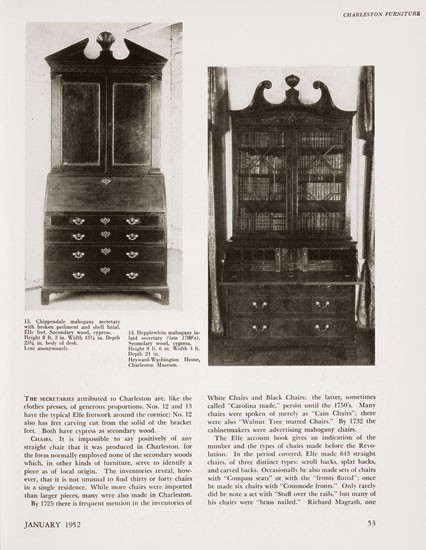
Page 53 in E. Milby Burton’s article, “The Furniture of Charleston,” in Antiques 61, no. 1 (January 1952). The desk-and-bookcase is now in the MESDA collection (see fig. 24).
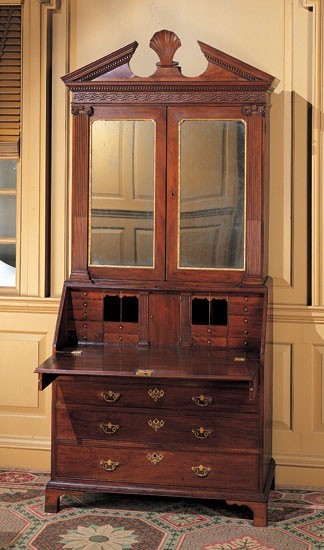
Desk-and-bookcase with carving attributed to Henry Burnett, Charleston, South Carolina, 1750–1755. Mahogany with cypress and mahogany. H. 97 3/4", W. 44 1/2", D. 24 1/4".
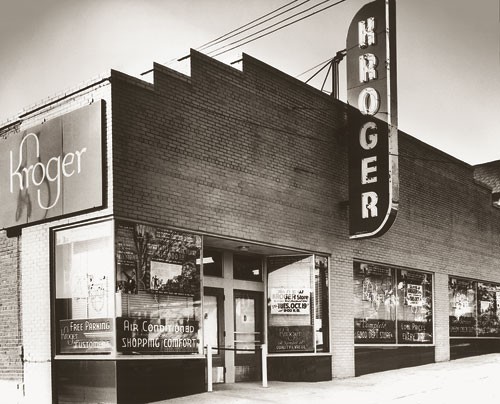
Early view of the Kroger grocery store that became MESDA.
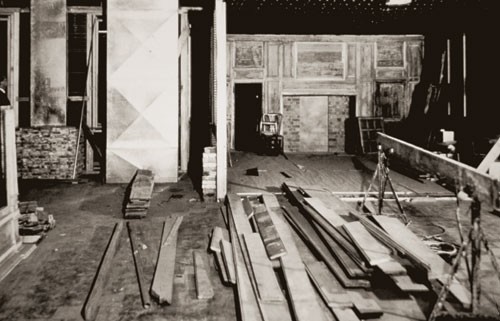
Installation of the Chowan Room, MESDA.
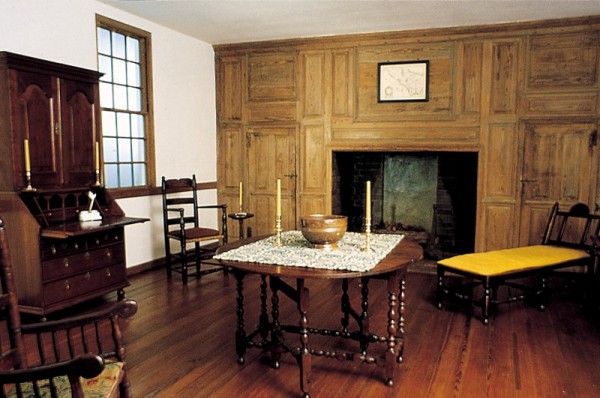
Chowan Room, MESDA.
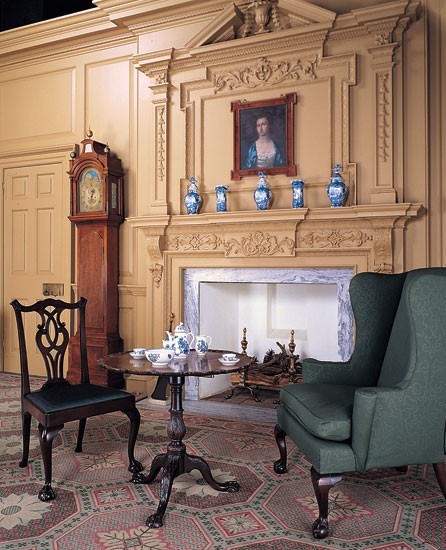
Room copied from the parlor of the Humphrey Summers House, Charleston, South Carolina, ca. 1770. MESDA staff member John Bivins oversaw the production of the millwork, replicated the carving with the assistance of the author, and designed the lighting, while Frank and other staff members consulted period inventories, newspapers, and advertisements to develop furnishing plans. The reproduction Wilton carpet is based on a description of one stolen in Charleston in 1784, as well as on similar carpets depicted in contemporary British paintings. This room is in the west wing, which was completed in 1986.
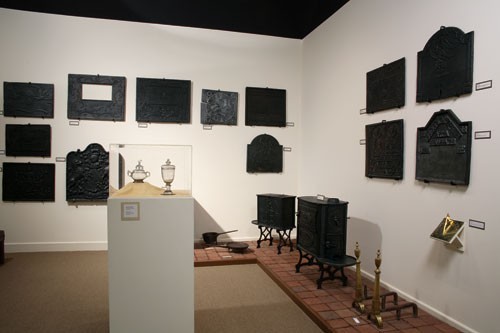
Metals gallery in the west wing of MESDA.
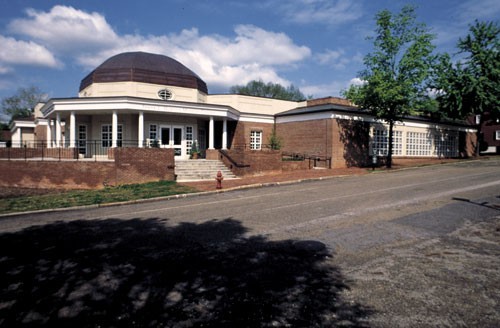
Horton Center, 924 South Main Street, Winston-Salem, North Carolina.
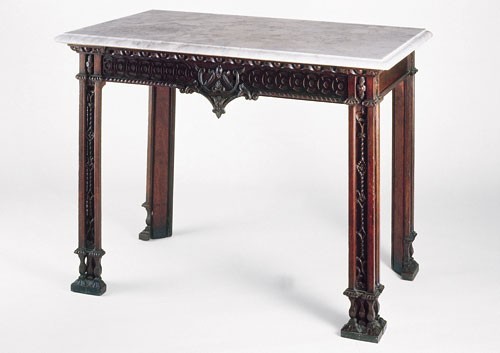
Sideboard table attributed to the shop of William Buckland with carving attributed to William Bernard Sears, Richmond County, Virginia, 1761–1771. Walnut and marble. H. 35", W. 42 1/2", D. 25 1/2". (Photo, Gavin Ashworth.) This table is one of two examples designed by Virginia and Maryland builder and architect William Buckland for John Tayloe II’s house, Mount Airy. Frank Horton sold a house in the historic district of Old Salem to raise the money to purchase this table for MESDA.
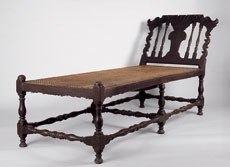
Couch, coastal South Carolina, 1700–1725. Walnut. H. 38 7/8", W. 27 1/4" (seat), L. 80 1/4". The upper portion of the crest is missing.
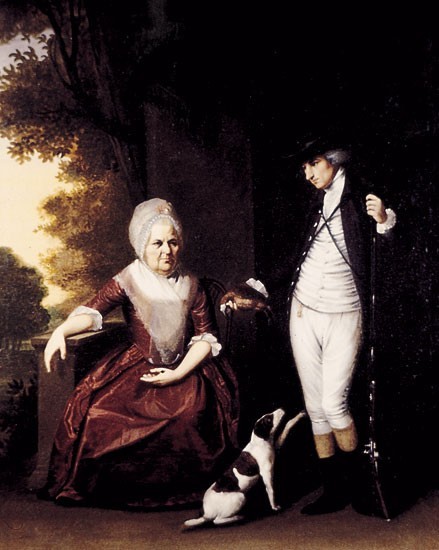
Henry Benbridge, unknown family portrait, Charleston, South Carolina, 1780–1790. 43 3/8" x 33 3/8". (Gift of Mr. and Mrs. Thomas Douglas III.)
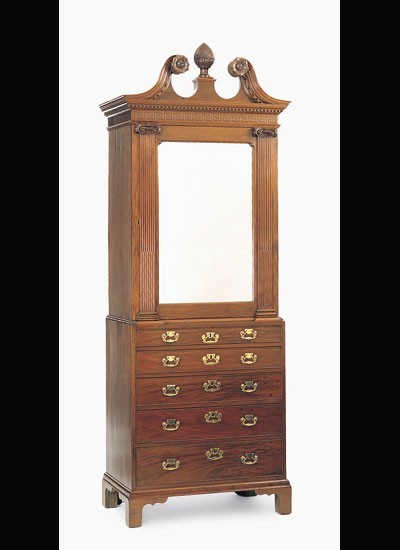
Bureau-and-cabinet with carving attributed to Henry Burnett, Charleston, South Carolina, 1750–1755. Mahogany and mahogany veneer with cypress. H. 93 1/4", W. 35 1/8", D. 20 1/2". (Kaufman Americana Collection)
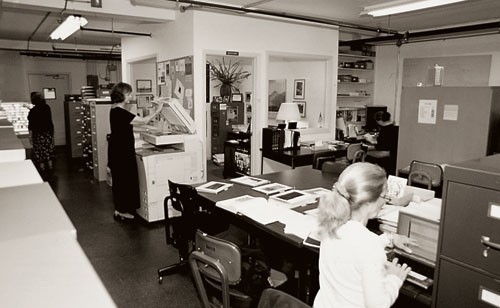
Research Room at MESDA.

Frank Horton recording information for the research files at MESDA
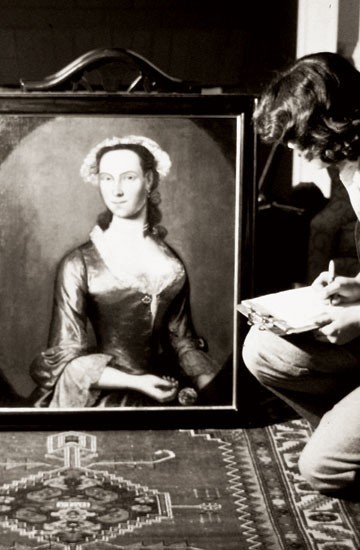
MESDA field representative Edith Culpepper Potter recording information on a painting.
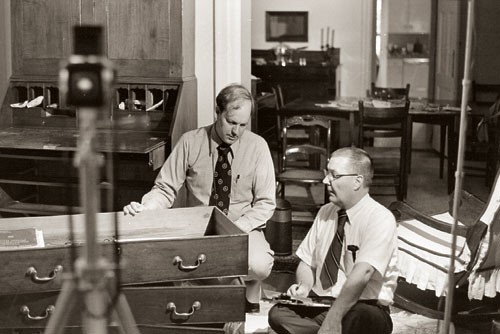
Frank Horton and Brad Rauschenberg recording information on a piece of case furniture.
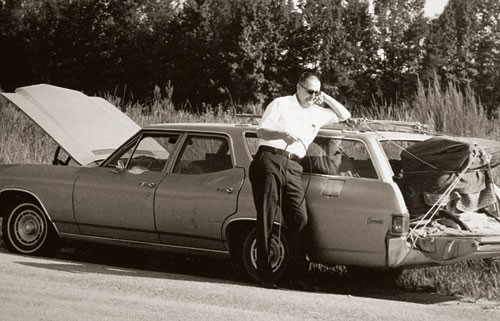
Frank Horton with one of his favorite station wagons, all of which had powerful engines but few other amenities.
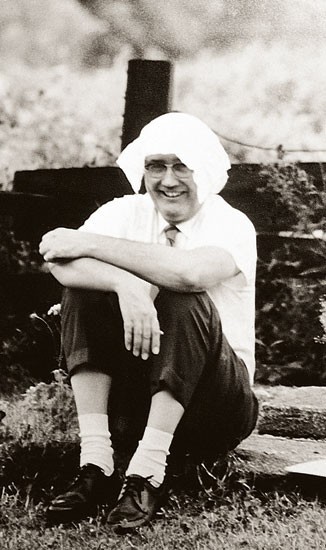
Frank Horton sheltering his head from a hot summer sun.
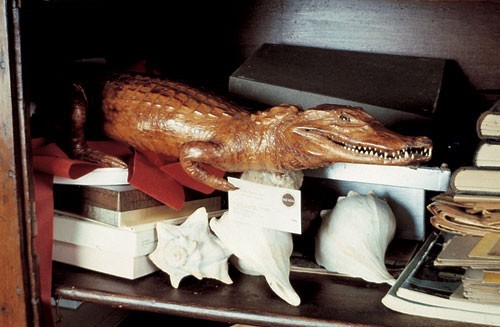
Stuffed alligator with a MESDA card in its claw.
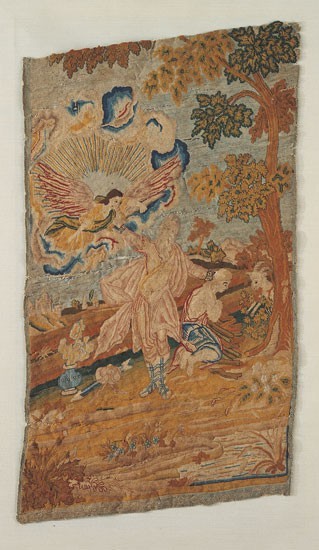
Elizabeth Boush, The Sacrifice of Isaac, worked at Elizabeth Gardner’s School, Norfolk, Virginia, 1768–1769. Silk tent stitch on silk. 19 1/2" x 11 1/2".
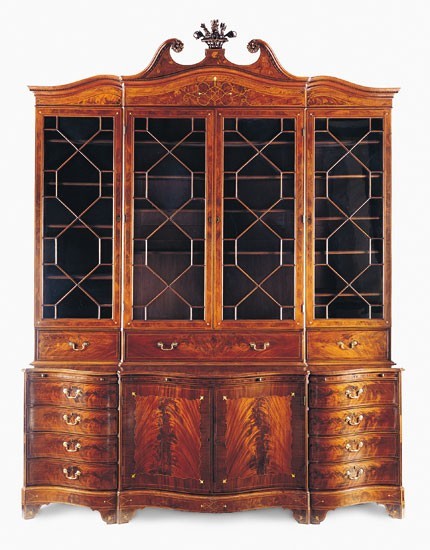
Library bookcase attributed to Martin Pfeninger, Charleston, South Carolina, 1770–1775. Mahogany, mahogany and burl walnut veneer, ivory, and unidentified marquetry woods with cypress. H. 128 3/4", W. 99", D. 20 1/2". (Courtesy, Charleston Museum; photo, Gavin Ashworth.)
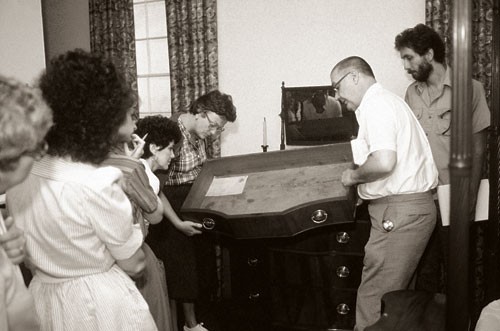
Frank Horton providing instruction at the MESDA Summer Institute.
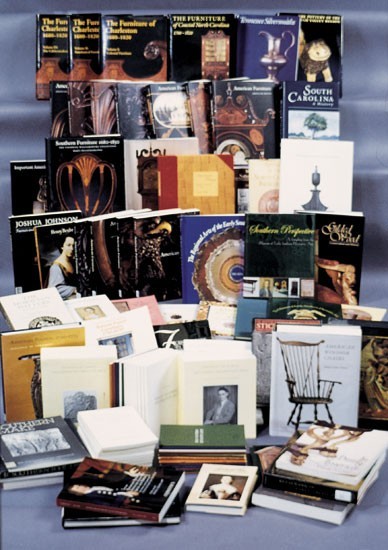
A selection of periodicals, journals, and books indebted to Frank Horton and the research files of MESDA.
